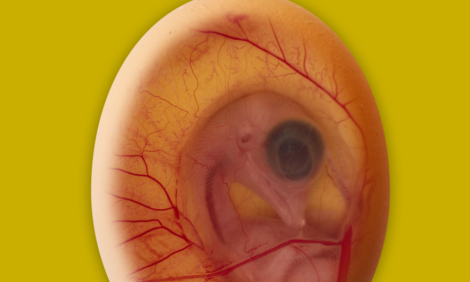



Wild Ducks in Siberia Found to Carry H5N1 Viruses
GLOBAL - Highly pathogenic avian influenza (HPAI) viruses of the H5N1 sub-type have been found in the nesting lakes of migratory water birds in Siberia by researchers in Japan. The newly identified virus type appeared to be non-pathogenic in chickens, ducks and quail.Naoki Yamamoto of Hokkaido University and colleagues there and at Japan Science and Technology Agency have published a paper in Virology Journal on their work characterising a non-pathogenic H5N1 influenza virus isolated from a migratory duck flying from Siberia in Hokkaido, Japan, in October 2009.
Infection with H5N1 HPAI viruses of domestic poultry and wild birds has spread to more than 60 countries in Eurasia and Africa, according to the researchers. This has raised concerns that HPAI viruses may be perpetuated in the lakes in Siberia where migratory water birds nest in summer.
To monitor whether HPAIVs circulate in migratory water birds, intensive surveillance of avian influenza has been performed in Mongolia and Japan in autumn each year. Until 2008, there had not been any H5N1 viruses isolated from migratory water birds that flew from their nesting lakes in Siberia. However, in autumn 2009, A/mallard/Hokkaido/24/09 (H5N1) (Mal/Hok/24/09) was isolated from a faecal sample of a mallard (Anas platyrhynchos) that flew from Siberia to Hokkaido, Japan. The isolate was assessed for pathogenicity in chickens, domestic ducks, and quails and analysed antigenically and phylogenetically.
Results
No clinical signs were observed in chickens inoculated intravenously with Mal/Hok/24/09 (H5N1). There was no viral replication in chickens inoculated intranasally with the isolate. None of the domestic ducks and quails inoculated intranasally with the isolate showed any clinical signs.
There were no multiple basic amino acid residues at the cleavage site of the haemagglutinin (HA) of the isolate. Each gene of Mal/Hok/24/09 (H5N1) is phylogenetically closely related to that of influenza viruses isolated from migratory water birds that flew from their nesting lakes in autumn. Additionally, the antigenicity of the HA of the isolate was similar to that of the viruses isolated from migratory water birds in Hokkaido that flew from their northern territory in autumn and different from those of HPAIVs isolated from birds found dead in China, Mongolia, and Japan on the way back to their northern territory in spring.
Conclusion
Mal/Hok/24/09 (H5N1) is a non-pathogenic avian influenza virus for chickens, domestic ducks and quails, and is antigenically and genetically distinct from the H5N1 HPAIVs prevailing in birds in Eurasia and Africa, concluded Yamamoto and co-authors.
H5 viruses with the HA gene of HPAI virus had not been isolated from migratory water birds in the surveillance until 2009, indicating that H5N1 HPAI viruses had not become dominant in their nesting lakes in Siberia until 2009.
Reference
Yamamoto N., Y. Sakoda, M. Motoshima, F. Yoshino, K. Soda, M. Okamatsu and H. Kida. 2011. Characterization of a non-pathogenic H5N1 influenza virus isolated from a migratory duck flying from Siberia in Hokkaido, Japan, in October 2009. Virology Journal, 8:65. doi:10.1186/1743-422X-8-65
Further Reading
| - | You can view the full report (as a provisional PDF) by clicking here. |








